Under idyllic conditions, snorkeling seems like the easiest, laziest activity you can do in the water. All you’re really doing is floating on the surface of the water face down, and maybe occasionally diving down if you’re more experienced.
How dangerous can it be? Do you really need a flotation device? After all, the clearer the waters, the more up-close-and-personal you want to get with the marine life, and a flotation device gets in the way of that.
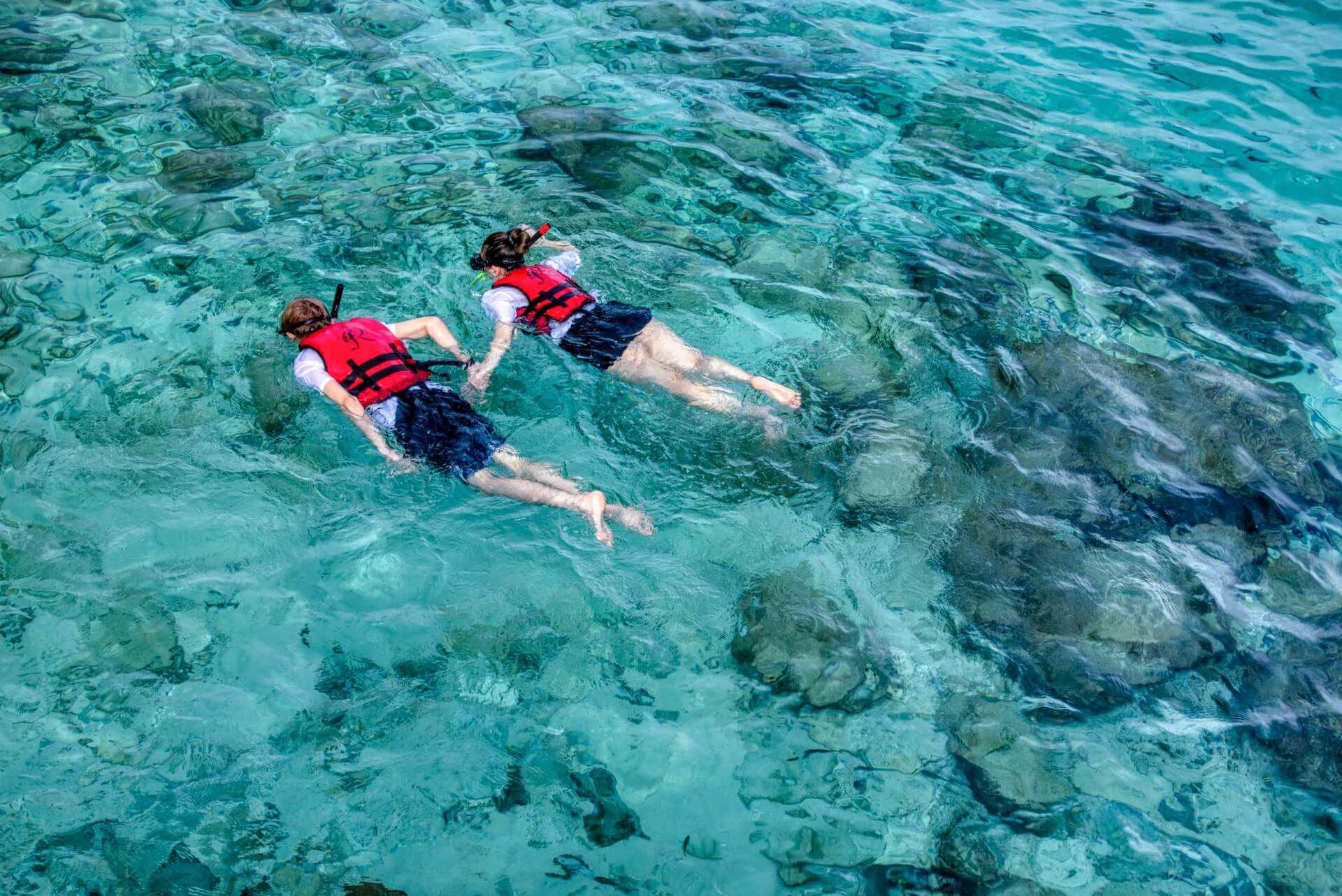
Flotation devices aren’t universally mandatory for snorkeling. However, their necessity is often influenced by personal comfort, safety concerns, local regulations, and the weather condition. With a flotation device taking care of your buoyancy, you can conserve your energy and snorkel for much longer than without one, so safety reasons aside, it’s a good idea to wear one for your enjoyment.
In this article, we will go over why flotation devices are a great benefit to snorkelers from both a safety and personal enjoyment standpoint, even if they aren’t strictly necessary.
Benefits of Wearing a Flotation Device for Snorkeling
General Safety
Safety should always be the primary concern when partaking in any water-based activity, and snorkeling is no exception. The ocean is a vast and unpredictable place. Even the calmest waters can present unexpected challenges, such as sudden changes in currents or water depth.
A flotation device serves as a personal safety net, ensuring that even if you encounter difficulty or unexpected situations, you remain afloat. This is especially crucial for preventing accidents and drownings.
By wearing a flotation device, you significantly decrease the risk of any unforeseen underwater situation turning life-threatening.
Energy Conservation
The thrill of exploring marine life beneath the water’s surface often makes snorkelers forget one important thing: swimming can be exhausting. Especially in the vast, open water where there’s no ground beneath your feet, maintaining buoyancy can quickly sap your energy.
A flotation device provides the buoyancy you need, allowing you to conserve energy and focus on the mesmerizing world beneath you. This is especially beneficial for prolonged snorkeling sessions, ensuring that fatigue doesn’t cut your adventure short or compromise your safety.
Assistance During Emergencies
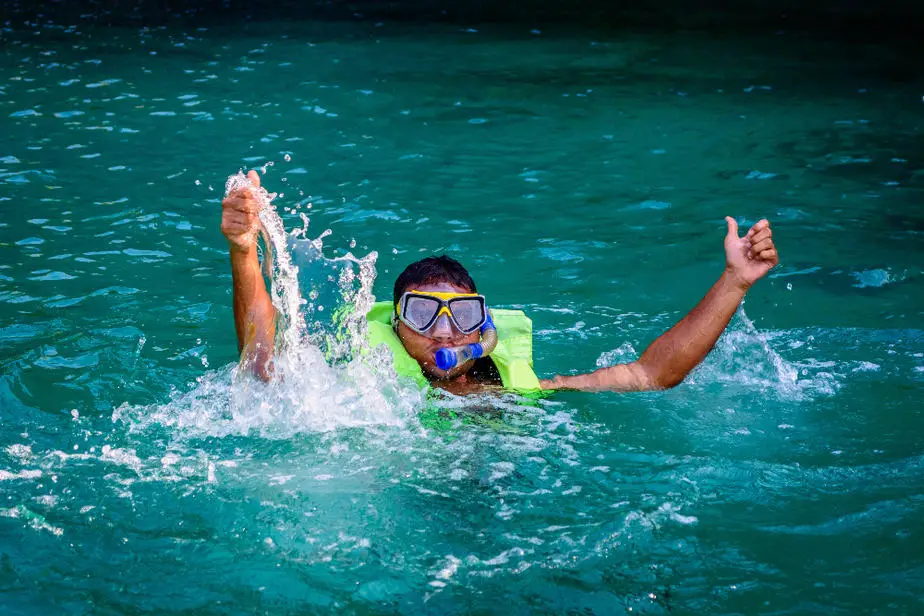
Imagine this: you’re out snorkeling, lost in the beauty of a coral reef, when suddenly you experience a cramp in your leg. Panic sets in as you realize that you’re in deep water and quite a distance away from your boat or the shore.
This is where a flotation device becomes an essential lifeline. It offers immediate buoyancy and a chance to recover. Clinging to the device, you can take a moment to relax, alleviate the cramp, catch your breath, or even signal for help if needed. It’s like having an emergency safety raft at your side at all times.
Increased Visibility
The ocean isn’t just for snorkelers. Boats, jet skis, and other watercraft are often present, making water traffic a genuine concern. A flotation device, especially those that come in bright colors, acts as a beacon, making snorkelers easily visible to other people on the water. This is invaluable in preventing collisions and ensuring that other watercraft operators are aware of your presence and can steer clear, ensuring everyone’s safety.
Lifeline for Inexperienced Swimmers
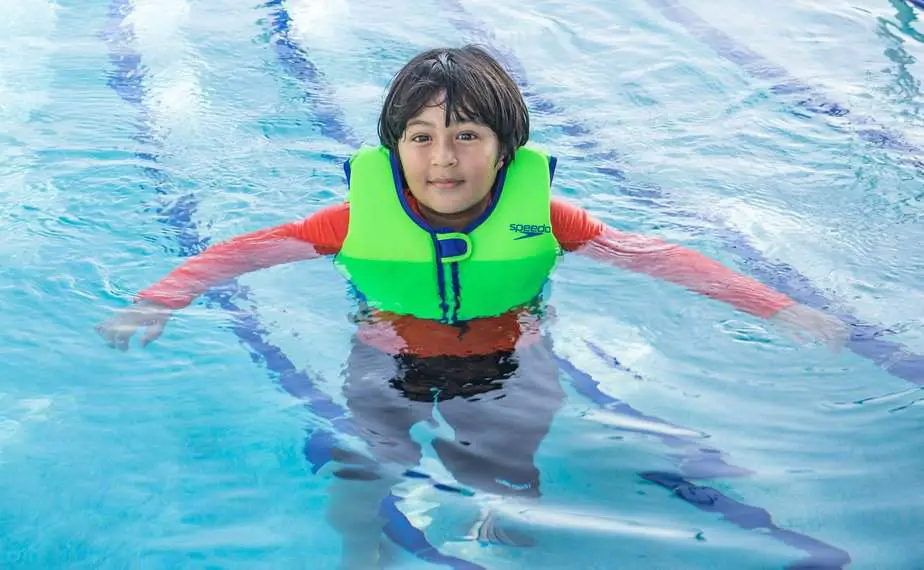
Everyone starts somewhere. Not every snorkeler is an Olympic-level swimmer or even a strong swimmer. For those just starting out or those not entirely confident in their swimming abilities, a flotation device is a game-changer.
It provides added assurance and stability in the water, allowing inexperienced swimmers to focus on the joys of snorkeling without the constant fear of sinking or tiring out too quickly.
Moreover, with the support of a flotation device, individuals can gradually build confidence and improve their swimming skills in a safe and controlled manner.
Overall Increased Enjoyment
Imagine floating weightlessly on the water’s surface, the sun warming your back, while beneath you, an array of colorful fish dart between corals. This serene experience is made possible with the aid of a flotation device.
Without the constant need to adjust your buoyancy or the worry of sinking, you can lose yourself in the wonders of the marine world. For many, this enhanced immersion into the underwater environment – free from distractions – is the pinnacle of the snorkeling experience.
Commonly Used Flotation Devices for Snorkeling
So now you have an idea of why flotation devices are so important for snorkelers, but you likely have a new question: which flotation device is best for snorkeling? In this section, we’ll go over the most commonly used devices snorkelers wear, as well as their benefits, to help you decide.
Snorkel Vests
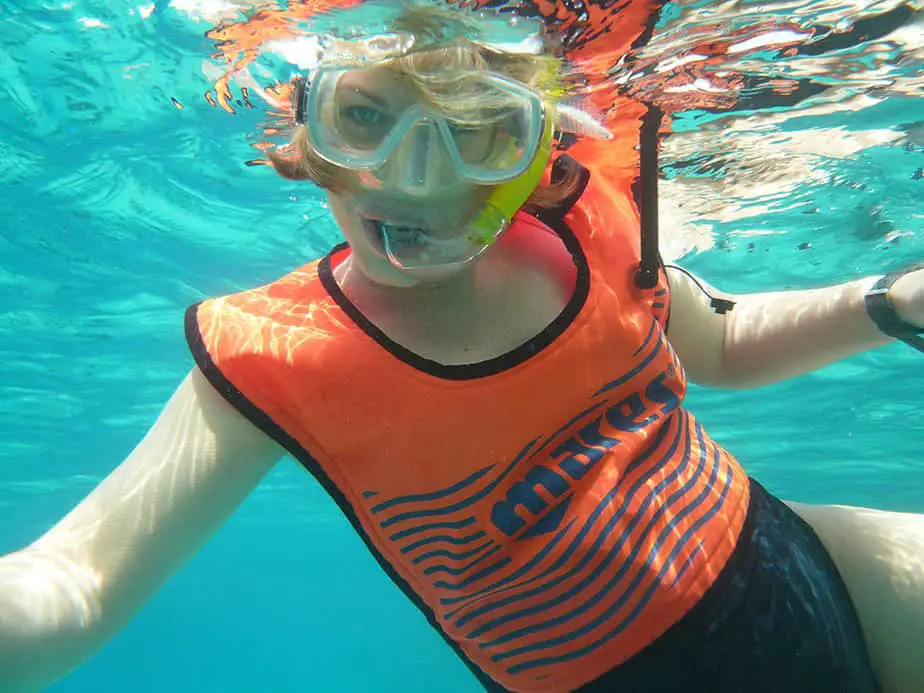
Snorkel vests are specifically designed for snorkeling and it’s no wonder that they are the most popular option. They offer both buoyancy and flexibility, ensuring that snorkelers can float on the surface while also being able to dive down to get a closer look at marine life.
These vests typically come equipped with easy-to-use oral inflation tubes, allowing the user to adjust the amount of air in the vest, and consequently, their buoyancy. This control offers a dual benefit: you can remain buoyant on the surface and quickly deflate when you want to dive a bit deeper.
For those worried about looking bulky in the water, snorkel vests are lightweight and less cumbersome than traditional life vests. They also provide an added layer of safety, ensuring that if a snorkeler gets fatigued or faces any challenges, they can easily inflate their vest and float comfortably.
Life Vests
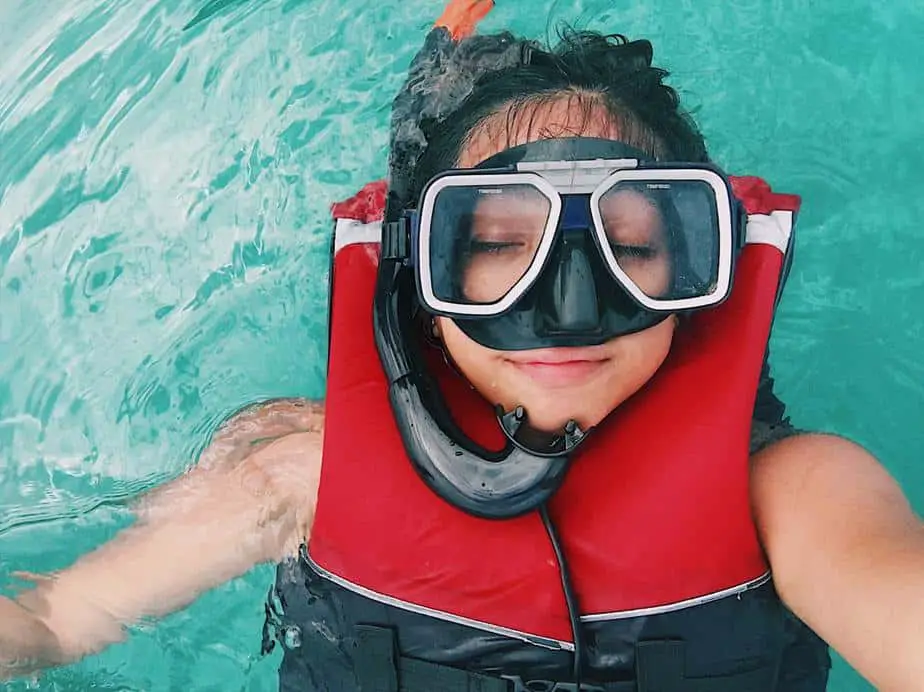
A life vest, often referred to as a life jacket, is designed primarily with safety in mind. They’re used across various water activities, from boating to water skiing.
Life vests are made to turn an unconscious person face-up in the water, a critical feature for ensuring that the person can breathe. They typically have a more substantial and bulkier build compared to snorkel vests, offering higher buoyancy.
This design, however, can make them less ideal for activities like snorkeling where one might want to dive beneath the surface occasionally or float horizontally face down. Nevertheless, for those prioritizing safety or for inexperienced swimmers, life vests can provide an invaluable layer of protection.
Flotation Belts
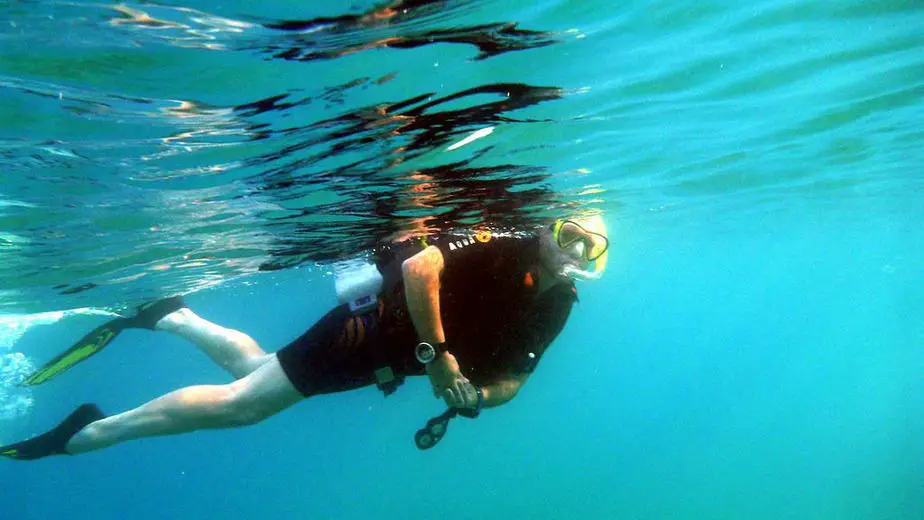
Flotation belts are a unique flotation device often associated with aquatic exercises and therapy but can be used for snorkeling too. Wrapped around the waist, they provide buoyancy primarily to the midsection of the body.
This design keeps the user in a more vertical position, ideal for treading water or engaging in water aerobics. For snorkelers, a flotation belt offers a hands-free experience and is less restrictive than vests.
While they don’t provide as much buoyancy as a full vest, they can be perfect for those who want a bit of support without the bulk. Beginners might find them beneficial, as they provide enough buoyancy to aid in floating without completely removing the challenge of maintaining one’s position in the water.
Wetsuit and Fins
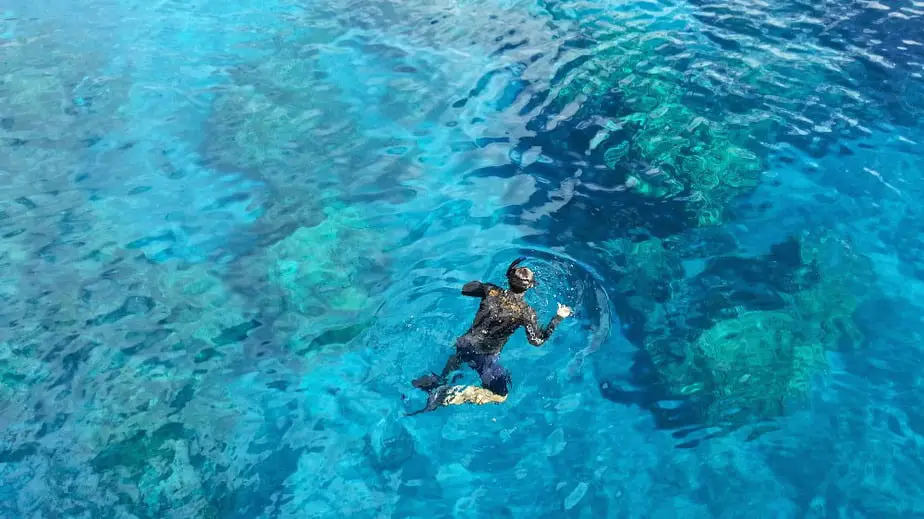
While wetsuits and fins aren’t primary flotation devices, they do influence buoyancy. The neoprene material is naturally buoyant, which means that wearing a wetsuit can make you floatier. The thickness of the wetsuit determines its buoyancy; the thicker the suit, the more buoyant it is.
On the other hand, fins, designed to improve propulsion in water, can sometimes have buoyant properties. Some fins are neutrally buoyant, some float, and others sink. Snorkelers should be aware of their equipment’s buoyancy properties to ensure they can control their position in the water effectively.
For instance, if a snorkeler finds they’re too buoyant on the surface, using fins that sink can help counteract that buoyancy, allowing for easier dives to view underwater wonders.
Frequently Asked Questions
Is a flotation device mandatory for snorkeling?
No, a flotation device is not universally mandatory for snorkeling. However, its use can be dictated by local regulations, specific snorkeling locations, or guided tour policies.
For instance, some marine protected areas or popular snorkeling spots may require all snorkelers to wear a flotation device to ensure safety and to minimize the impact on marine life. Always check the guidelines or rules of the area you intend to snorkel in.
I’m a strong swimmer. Do I still need a flotation device?
While being a strong swimmer is a definite advantage in water-based activities, it does not negate the potential risks associated with snorkeling. Tides, currents, and unexpected situations can pose challenges even to experienced swimmers.
A flotation device can provide an added layer of safety. It’s also useful for resting, especially during prolonged snorkeling sessions. The choice is personal, but it’s always a good idea to err on the side of caution.
Can children go snorkeling without a flotation device?
It’s highly recommended that children always use a flotation device when snorkeling. Children can get tired quickly, may not fully comprehend potential dangers, and can be more susceptible to panic in unfamiliar situations.
A flotation device can give them added buoyancy and make their snorkeling experience safer and more enjoyable. Always ensure the device is suitable for the child’s size and weight and is worn correctly.
Do flotation devices hinder the snorkeling experience?
This is subjective and can vary based on individual preferences and the specific device in use. Some snorkelers feel that flotation devices, like life vests, can be restrictive or make it more challenging to dive below the surface to get a closer look at marine life.
However, others appreciate the added security and rest support they provide. The key is to find a device that’s comfortable, provides the necessary buoyancy, and suits your snorkeling style.
Can I use a regular pool float or inner tube for snorkeling?
While pool floats and inner tubes can provide buoyancy, they are not designed for snorkeling in open water conditions. They might get carried away by currents, offer inadequate support, or even deflate.
Dedicated snorkeling flotation devices are designed with safety and ocean conditions in mind. If you’re planning to use a pool float or inner tube, it should be in calm, controlled environments like sheltered bays or lagoons and not in the open ocean.
Do snorkeling tours and rental companies provide flotation devices?
Most snorkeling tours and rental companies prioritize the safety of their clients and will typically provide flotation devices. This is especially true in locations known for strong currents or deeper waters.
It’s always a good idea to check in advance and ensure that the provided equipment meets safety standards and is in good condition.
What are the safety concerns associated with not using a flotation device while snorkeling?
Choosing not to use a flotation device while snorkeling comes with several risks:
- Fatigue: Even strong swimmers can become tired, especially during extended periods in the water.
- Currents: Ocean currents can be unpredictable. A sudden or strong current can catch snorkelers off guard.
- Cramps: It’s not uncommon for snorkelers to experience muscle cramps, which can affect their ability to swim.
- Panicking: Facing unfamiliar situations or marine creatures might cause panic, and having a flotation device can provide reassurance.
- Environmental Impact: Without a flotation device, inexperienced snorkelers might touch or stand on corals when trying to rest, which can damage delicate marine ecosystems.
In any scenario, safety should always be a top priority. Even if you’re confident in your abilities, consider the unexpected factors that might affect your snorkeling experience.
Sources:

